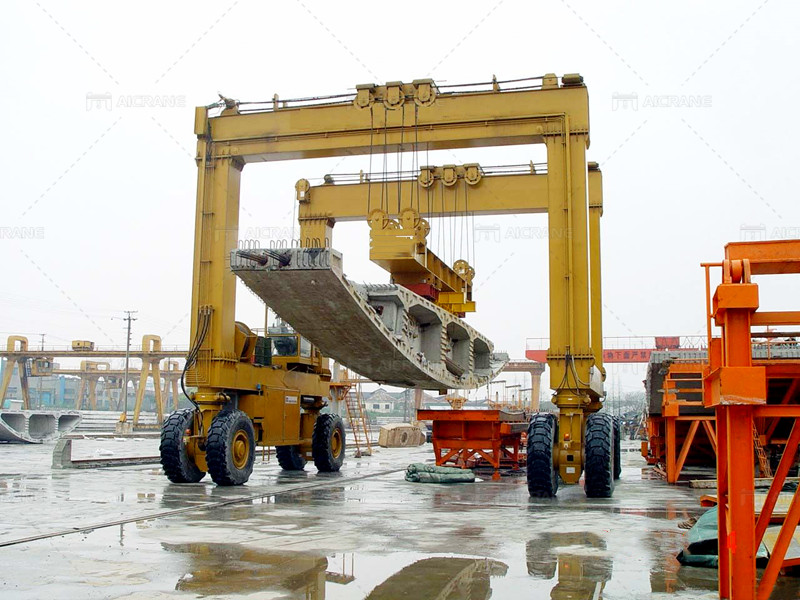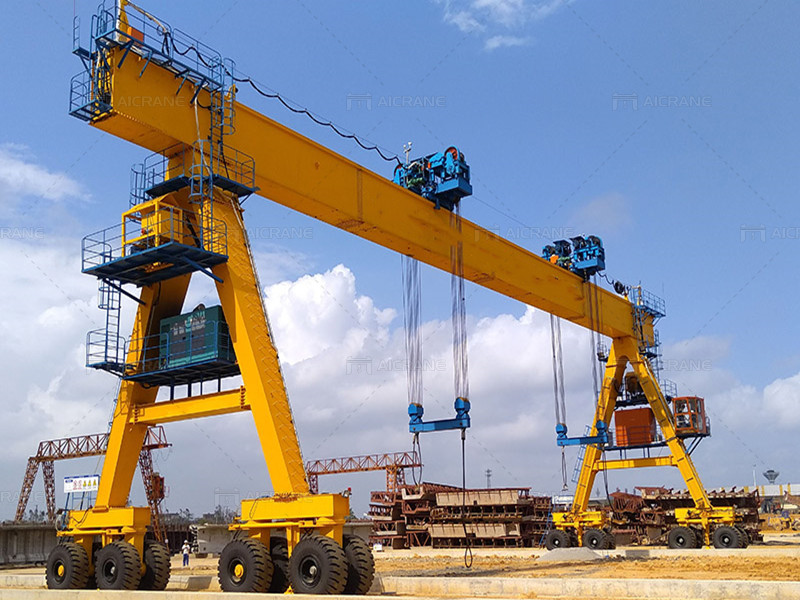Maintaining a 100 ton gantry crane is essential for ensuring its optimal performance, longevity, and safety. A gantry crane of this capacity is a substantial investment and a critical piece of equipment in many industrial operations, including construction, shipping, and manufacturing. Proper maintenance involves regular inspections, timely repairs, lubrication, and adherence to safety protocols. This guide will provide an in-depth look at the essential steps and best practices for maintaining a 100 ton gantry crane.

Regular Inspections
a. Daily Inspections
Visual Checks: Begin each day with a visual inspection of the gantry crane. Look for any obvious signs of wear and tear, such as frayed cables, cracked welds, or worn-out components.
Operational Tests: Test the controls, brakes, and limit switches to ensure they are functioning correctly. Any unusual noises or movements should be noted and addressed immediately.
b. Weekly Inspections
Mechanical Components: Inspect gears, shafts, and bearings for signs of wear or damage. Ensure that all bolts and fasteners are secure.
Electrical Systems: Check electrical connections, wiring, and control panels for any signs of corrosion, wear, or damage. Ensure that all safety devices are operational.
c. Monthly Inspections
Structural Integrity: Conduct a thorough inspection of the gantry crane’s structure. Look for any signs of metal fatigue, rust, or structural damage.
Hydraulic Systems: Inspect hydraulic lines and connections for leaks. Ensure that hydraulic fluid levels are within the recommended range and that the fluid is clean and free of contaminants.
Lubrication
a. Importance of Lubrication
Reducing Friction: Proper lubrication reduces friction between moving parts, minimizing wear and extending the lifespan of the gantry crane’s components.
Preventing Corrosion: Lubricants also help protect metal surfaces from corrosion caused by moisture and other environmental factors.
b. Lubrication Schedule
Daily: Lubricate the hoist ropes and chains daily. Ensure that the lubrication is applied evenly and that excess lubricant is wiped away to prevent buildup.
Weekly: Lubricate gears, bearings, and other moving parts on a weekly basis. Use the manufacturer-recommended lubricants to ensure compatibility and effectiveness.
Monthly: Perform a thorough lubrication of all components once a month. Check lubricant levels in gearboxes and other sealed systems, topping up or replacing lubricants as needed.
Timely Repairs
a. Identifying Issues
Signs of Wear: Regular inspections will help identify parts that are worn or damaged. Look for signs such as unusual noises, vibrations, or changes in performance.
Immediate Action: Address any identified issues immediately to prevent further damage. Small repairs can prevent larger, more costly problems in the future.
b. Using OEM Parts
Original Equipment Manufacturer (OEM) Parts: Always use OEM parts for repairs. These parts are specifically designed for your heavy duty gantry crane and ensure optimal performance and safety.
Qualified Technicians: Hire qualified technicians to perform repairs. They have the necessary skills and knowledge to ensure that repairs are done correctly and safely.

Maintaining Safety Protocols
a. Operator Training
Proper Training: Ensure that all gantry crane operators are properly trained and certified. They should be familiar with the gantry crane’s operating procedures, safety protocols, and emergency procedures.
Refresher Courses: Conduct regular refresher courses to keep operators up to date with the latest safety standards and operating techniques.
b. Safety Inspections
Routine Checks: Perform routine safety checks to ensure that all safety devices, such as emergency stop buttons, limit switches, and overload protection systems, are functioning correctly.
Safety Equipment: Ensure that all operators and maintenance personnel have access to and use the appropriate personal protective equipment (PPE), such as hard hats, gloves, and safety harnesses.
Documentation and Record Keeping
a. Maintenance Logs
Detailed Records: Keep detailed records of all maintenance activities, including inspections, repairs, and lubrication. This helps track the condition of the gantry crane over time and identify recurring issues.
Scheduled Maintenance: Adhere to a scheduled maintenance plan based on the recommendations of the manufacturer. This helps ensure that maintenance tasks are performed regularly and systematically.
b. Compliance and Audits
Regulatory Compliance: Ensure that the gantry crane’s maintenance practices comply with all relevant regulations and industry standards. This includes maintaining up-to-date records for regulatory audits and inspections.
Internal Audits: Conduct regular internal audits of maintenance practices to ensure compliance and identify areas for improvement.
Environmental Considerations
a. Operating Environment
Indoor vs. Outdoor: The maintenance needs of a 100 ton gantry crane can vary depending on whether it is used indoors or outdoors. Outdoor gantry cranes are more exposed to environmental factors such as rain, snow, and temperature fluctuations, which can affect their components.
Weather Protection: For outdoor gantry cranes, ensure that they are equipped with protective covers and that they are properly shielded from the elements when not in use.
b. Environmental Impact
Eco-Friendly Practices: Use eco-friendly lubricants and cleaning agents to minimize the environmental impact of maintenance activities. Dispose of used lubricants and other materials in accordance with environmental regulations.
Energy Efficiency: Regular maintenance can help improve the energy efficiency of the gantry crane, reducing its environmental footprint and operating costs.
Maintaining a 100 ton gantry crane requires a comprehensive and systematic approach. Regular inspections, proper lubrication, timely repairs, adherence to safety protocols, and meticulous record-keeping are all essential components of an effective maintenance plan. By following these best practices, you can ensure that your 100 ton gantry crane remains in optimal condition, operates safely, and has a long service life. Proper maintenance not only protects your investment but also enhances the efficiency and safety of your operations.
